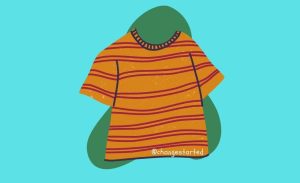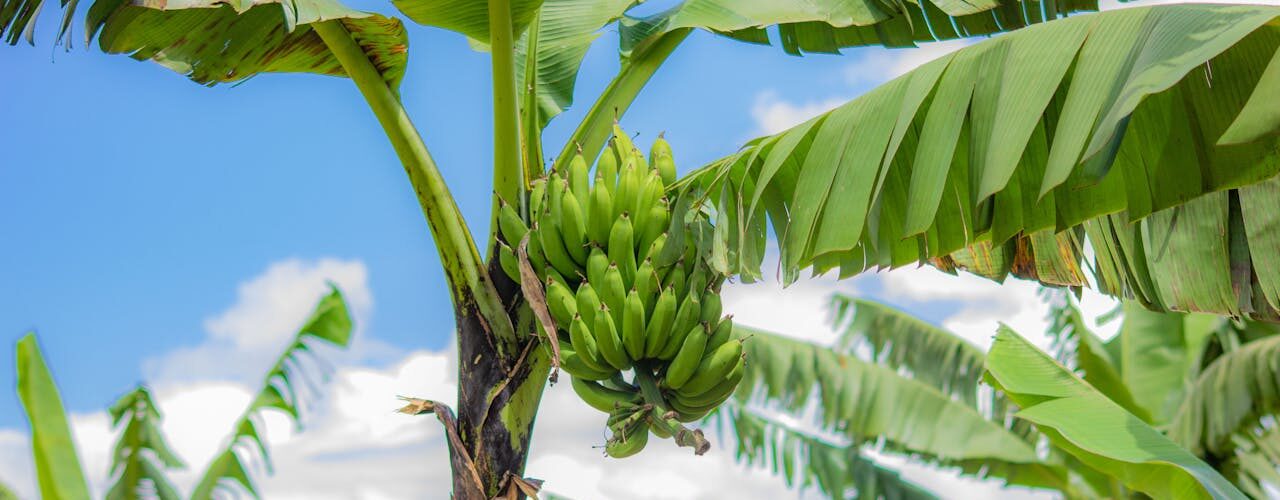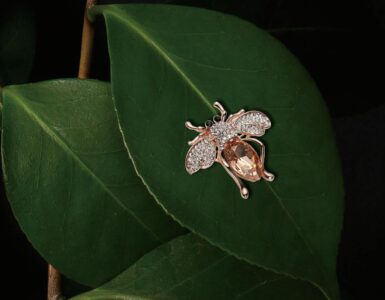Bananas are among the world’s most commonly consumed fruits because of their numerous health benefits, round-the-year availability and ease of use with no peeling or washing.
Contrary to what many people think, these popular fruits are not grown on trees, they come from the largest herbaceous flowering plant. Banana plants are normally tall and sturdy plants. The part that looks like a trunk is a pseudostem composed of tightly packed leaves.
While eating fruits of banana plants is popular and healthy, banana fibres, extracted from the pseudostem are often overlooked as a valuable resource. It’s an eco-friendly material traditionally used in various cultures, especially in Asian countries, like Japan, India, Nepal and the Philippines.
These natural fibres possess remarkable properties, including high tensile strength, flexibility and most importantly biodegradability, making them an eco-friendly choice compared to synthetic fibres.
In the current times, when our Planet is struggling with plastic pollution and environmental waste, applications of banana fibres offer a sustainable alternative to synthetic materials.
Banana fibres have gained significant attention in various industries. From textiles to construction, these versatile fibres offer many applications, promising a greener future.
Process of Extracting Fibres from Banana Plant
The production of banana fibre typically starts after it completes its fruiting cycle. Once the bananas are harvested, the pseudostem is cut down and involves several key steps:
Fibre Separations: This process often involves rotting, a technique where the plant material is soaked in water to soften and separate the fibres. Alternatively, the unusable parts can be manually removed, though this is more labour-intensive.
Drying and Bunching: Once separated, the fibres are bunched together and sun-dried. At this stage, separating the inner and outer fibres is challenging, so they are typically kept together.
Fibre sorting: After drying, the fibres are sorted based on quality. The highest quality fibres are graded and used for premium applications like silk alternatives. Other grades may be produced depending on the manufacturer.
Spinning and Weaving: The sorted fibres are spun into yarn, which is then further processed, dyed and woven into a variety of products, including clothing, accessories, home decor items and industrial materials.
Uses of Banana Fibres
Banana fibres offer a sustainable and versatile solution for various applications. Its biodegradable nature makes it an environmentally friendly choice.
In terms of performance, banana fibre excels in strength and durability. It is significantly stronger and more durable than traditional fibres like cotton and linen, making it ideal for creating long-lasting products.
Moreover, banana fibre is highly moisture-wicking, efficiently absorbing and releasing moisture. This property keeps the wearer cool and dry, making it perfect for activewear and sportswear.
The fine inner fibres of banana plants offer a soft and luxurious feel. This makes them a suitable choice for producing high-quality textiles, such as clothing and home furnishings.
Its versatility allows it to be blended with other fibers creating hybrid materials with unique properties. Furthermore, this blending enhances the performance and aesthetics of the final product.
Here are some of the uses of banana fibres.
Textiles and Fashion
The delicate inner fibres of the banana plant, often referred to as banana silk, possess a luxurious texture and sheen, making them ideal for high-end fashion. Garments made from banana silk are soft, breathable, and hypoallergenic, providing comfort and elegance. They can be used to create a variety of clothing items, including blouses, dresses, lingerie, and scarves.
In contrast, the stronger outer fibres are well-suited for everyday wear. They can be woven into durable fabrics for shirts, pants, and activewear. The moisture-wicking properties of banana fibre make it an excellent choice for gloves and hats, as it helps to keep the wearer cool and dry.
Home Decor
Historically, banana fibres have been used for basic applications like rope-making and mat weaving.
In recent times, fibres have been used to make a variety of eco-friendly home decor products, including shopping bags, rugs, curtains, table mats, door mats, planters, lampshades, and upholstery.
Its natural beauty and durability make it a popular choice among eco-conscious consumers.
Industrial Uses
With advancements in processing techniques, banana fibre is now finding its way into a wider range of industries. Its strength, durability, and lightweight properties make it a valuable resource for various industries.
It can be used to create insulation materials, filtration systems, and composite materials.
Packaging
In the packaging industry, banana fibre can be used to produce sustainable packaging materials such as containers, bags, and boxes.
Paper
Banana-based materials are also being used in paper production. The banana paper as it is called provides a sustainable alternative to traditional wood-pulp-based paper.
Countries like Japan and Germany are exploring making currencies using banana paper.
Are banana fibres a good choice for a better tomorrow?
Banana plants require minimal water and pesticides and decompose naturally, leaving no harmful residues behind. However, certain challenges are associated with harnessing banana fibre’s potential.
Let us look at the advantages and disadvantages of using banana fibre.
The advantages
Waste reductions: By utilizing banana peels or stems, a common agricultural waste product, banana fibre production reduces waste and promotes a circular economy.
Sustainable cultivation: Banana plants are often cultivated sustainably, with less water, and minimal use of pesticides and fertilizers.
Biodegradability: Products made from banana fibre are completely biodegradable, breaking down naturally without harming the environment.
Reduced reliance on synthetic fibres: By choosing banana fibre over synthetic alternatives, we can reduce pollution and conserve resources.

The negatives
Despite its various advantages, there are some disadvantages to utilizing banana fibres. These include
Processing Challenges: The process of extracting and processing banana fibre can be labour-intensive, requiring skilled workers and specialized equipment.
Limited Availability: Banana fibre is not as widely available as other natural fibres, which makes it more difficult and expensive to source.
Moisture Absorption: Banana fibre is not as absorbent as cotton, making it unsuitable in hot and humid climates.
Colour Limitations: These have limited colour options compared to synthetic fibres and other natural fibres that can be easily dyed.
To ensure sustainable products are made that maximize the positive environmental impact of banana fibre, a multifaceted approach is necessary.
This can be done by promoting sustainable cultivation practices, supporting fair trade and ethical sourcing, and choosing brands that prioritize fair labour practices and ethical sourcing can make a significant difference.
Additionally, educating the public about the benefits of sustainable fashion and the role of banana fibre is vital. Raising awareness about the environmental and social benefits of choosing banana fibre can encourage consumers to make conscious choices and support sustainable practices.
By making informed choices as consumers, we can collectively drive demand for sustainable and ethical banana fibre products, encouraging the industry to adopt more environmentally friendly practices.






Add comment